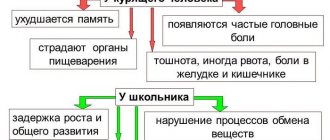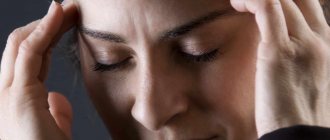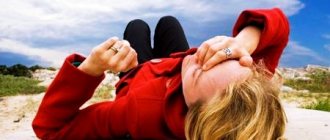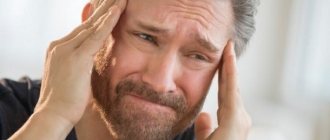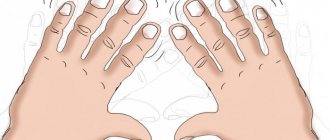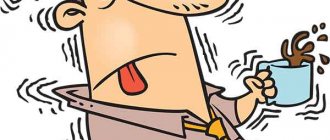Home / Pathologies / Others
Back
Published: 03/04/2021
0
116
After a busy day of work, the long-awaited time for relaxation finally comes. The person falls asleep, the body is relaxed, the brain is pleasantly foggy. But, suddenly - a sharp push, a feeling of falling, and a premature awakening. Why does a person twitch when falling asleep? Are tremors dangerous or are they annoying episodes that should be put up with - scientists, doctors and healers comment on the condition.
- 1 Scientific explanation of startles when falling asleep
- 2 Physiological factors of night twitching
- 3 Pathological factors of myoclonus
- 4 Prophylaxis to prevent physiological myoclonus
- 5 Doctor consultations and diagnosis
- 6 Medical assistance
The scientific explanation for the startle when falling asleep
In ancient times, ancestors made completely mystical assumptions, explaining why a person twitches when he falls asleep. A parallel was drawn between falling asleep and the temporary departure of the soul to the kingdom of the dead. The involuntary twitching was perceived as a fearful reaction to the devilish touches.
The scientific approach to the study of startling during sleep includes different theories - from the first signs of incipient epilepsy to functional disorders of the hypothalamus (a part of the brain). Both hypotheses were found untenable.
Somnologists turned out to be more convincing. The study of the physiological phenomenon of individual theorists led to the conclusion that the cause of shuddering when falling asleep in both children and adults is a change in sleep phases. According to another theory, the hypothalamus uses reflex muscle movements to check whether the body is alive - after all, the brain perceives slow breathing, a decrease in pulse and heart rate during sleep as extinction.
Similarly, a cause-and-effect relationship has been identified between fatigue from daytime physical, psychological or mental overload and nighttime twitching. The reasons why a person twitches in his sleep are now systematized and grouped.
Possible reasons
The brain sometimes thinks that it is dying when it falls asleep. Doctors have been studying the problem of shuddering at the moment of falling asleep for a long time. Today, 4 theories have been developed as to why tremors appear in the body when falling asleep. They look like this:
- Dying states - the brain, while falling asleep, identifies changes in the body as dying and takes actions to restore active functioning. Muscle contractions occur in order to activate blood circulation in the body and the person shudders intensely. During this same period, most people experience nightmares (usually falling from a height or diving under water without the ability to emerge). Such artificial stimulation of danger projected onto a person is produced by the brain to release adrenaline, which should improve the condition. This explains most cases of why a person twitches at night.
- The transition from the stage of shallow sleep to deep sleep - during the period of deep sleep, the human body completely relaxes. If there is excess energy in the muscles, at the moment of transition from one phase of sleep to another, they are discharged by twitching. Extremely rarely, a seizure may occur.
- Stress – when stress is chronic, and negative thoughts and emotions accumulate over a long period of time, the brain begins to analyze them during the period of falling asleep, although consciousness is already turned off. Due to this activity, nerve impulses are strengthened, which leads to tissue vibration before sleep. Most often they wake up in such a situation.
- Lack of oxygen - if the oxygen content in the air is low, then the muscle cells begin to experience its deficiency, which is why the brain sends impulses that cause their contractions. This is necessary because at the moment of shuddering, blood circulation in the tissues increases and they receive the required amount of oxygen.
Most often, flinching is one-time in nature and does not appear regularly. In this condition, a person usually does not seek medical help, since twitching does not bother him.
Physiological factors of night twitching
A sharp contraction of muscles when falling asleep and during sleep, similar in sensations to an electric shock, is called nocturnal myoclonus. Increased muscle tone generates positive myoclonus, decreased muscle tone generates negative myoclonus.
The simultaneous excitation of the nerve fibers going to the muscles leads to the fact that a person shudders in his sleep, he twitches, and a large tremor runs through the body. This phenomenon is classified in medicine as hypnagogic twitching.
The causes of physiological myoclonus fit into the following versions:
- Neurophysiological. During the REM (rapid eye movement) sleep phase, the body and muscles are as relaxed as possible. A discrepancy is brewing between muscle tone and the “dying” body. To return to life from a state of sleep similar to death, the brain sends an impulse signal to the muscles. A strong shock, interrupting relaxation, causes a person to twitch when falling asleep.
- Sleep phases. The alternating phases of paradoxical (shallow) and orthodox (deep) sleep affect brain activity. Dynamism is manifested in the signals sent to the brain, in response to which the human body begins to tremble.
- Chronic stress. The cause of myoclonic spasms can be neurotic disorders or stress experienced during the day. The excited nervous system does not relax at night and re-experiences painful sensations before falling asleep.
- Physical exercise. Overloaded muscles that are in good shape for a long time (sports, hard work, long walking) are not able to relax even during sleep. To gradually relieve tension, the brain sends an impulse to the muscles, which, by contracting, reduce tone - as a result, a person shudders or twitches in his sleep or at the moment of falling asleep.
- Circulatory disorders. They are observed against the background of insufficient blood supply to the vessels, mainly of the lower and upper extremities. Oxygen-starved vessels collapse, limbs go numb, which prompts the brain to immediately send a signal order to change position. In a dream, a person tosses and turns, twitches, and even wakes up briefly. Changing posture leads to normalization of blood supply.
- Myoclonus of fear. A sharp noise, a bright flash of light makes a sleeping person jerk sharply. The body's reaction is often accompanied by profuse sweating, rapid heartbeat, and tachycardia.
- Myoclonus with apnea. A brief cessation of breathing during sleep causes the brain to wake up, followed by a start.
The listed symptoms, according to experts, are not a deviation, but a normal phenomenon. Jerking during sleep in children is also considered physiological (benign) myoclonus. Since the phases of sleep in children alternate and last differently than in adults, they twitch more often in their sleep or when falling asleep. The child's startling, even if it is constant but does not interfere with sleep, is also normal.
How not to twitch in your sleep: ways to solve the problem
If sudden movements during sleep bring you discomfort and you want to get rid of them, then you must adhere to the following recommendations:
- Do not consume caffeinated foods or drinks before bed;
- do not drink alcohol or smoke nicotine-containing cigarettes before going to bed;
- do not do intense physical exercise in the evening and before bed; instead, you can do yoga or Pilates;
- 30 minutes before bedtime you need to stop using any electronic gadgets, turn off the lights and try to relax;
- do breathing exercises before a night's rest, namely, enter for 10 counts, hold your breath for 5 counts, and then exhale for 10 counts. After several repetitions of this exercise, the breathing rate, heart rate and brain activity will decrease.
If you experience persistent twitching during sleep that persists even after following these recommendations, consult your doctor. A qualified specialist will find out the cause of frequent involuntary movements and help get rid of them.
It turns out that sleeping at night affects weight loss, and the less a person sleeps, the more likely he is to gain extra pounds. Read why this happens in a new material about the relationship between sleep and weight loss: why those who sleep little are prone to gaining excess weight .
Do you know that some dreams are dangerous to your health? Find out only in our exclusive material about why we sleep and which dreams are considered the most dangerous to health .
apteka24.ua is the first online pharmacy you can trust.
Pathological factors of myoclonus
Pathological myoclonus occurs for a number of reasons that determine whether it belongs to one type or another. Unlike physiological myoclonus, the pathological variety can be observed not only when falling asleep or during sleep, but also during the daytime.
The pathological background of the phenomenon of throwing up and jerking when falling asleep is often associated with brain lesions. Known as cortical myoclonus. Expressed in the following diseases:
- Epilepsy . Oxygen starvation of the brain, degenerative movement disorders, and epileptic seizures lead to progressive muscle cramps. When falling asleep or in a dream, the whole body can shake, as well as individual parts - an arm, a leg, or there is an involuntary twitching of the head.
- Essential myoclonus. A hereditary rare disease that develops from childhood. It is characterized by periodic arrhythmic and asymmetrical twitching of the limbs, sometimes of the maxillofacial muscles.
- Hereditary degenerative lesions of the brainstem and cerebellum.
- Viral inflammatory processes in the brain - tick-borne and other encephalitis.
- Pathologies of the basal nucleus of the brain, affecting the motor function of the body.
- Destruction of nerve fibers in pathologies of internal organs.
- Neuroses and mental disorders.
- Convulsions and tremors, more often affecting the lower extremities, are associated with a lack of calcium and magnesium in the body. A suitable vitamin and mineral complex prescribed by a doctor after laboratory tests will eliminate vibrations during sleep and when falling asleep.
- Pathology known in medicine as Willis disease, Ekbom phenomenon or RLS (restless legs syndrome). It is expressed in the form of unpleasant twitching of the ankle when falling asleep and at night.
The factor that provokes cortical myoclonus is intoxication of the body, especially poisoning with salts of heavy metals. Injuries, taking or, conversely, abruptly stopping certain medications can also cause shuddering throughout the body and convulsions when falling asleep.
Both benign and pathological myoclonus are characteristic of representatives of both sexes. But boys and girls, that is, young people, suffer less often than the older generation.
Prophylaxis to prevent physiological myoclonus
Typically, nighttime twitching does not annoy a person and does not interfere with sleep. Minor discomfort experienced when falling asleep generally does not disturb the peace of night's rest. However, for people suffering from sleep disorders, twitching and sudden startlings do not allow them to fall asleep quickly and soundly. In this case, tips aimed at relaxing the body and calming the mind and brain will help:
- refusal of traumatic television programs, reading action-packed literature, unpleasant conversations an hour before bedtime;
- exclusion of late snacks and tonic drinks;
- taking a warm shower;
- before going to bed, detachment from daytime worries and painful thoughts;
- herbal soothing teas;
- balanced nutrition throughout the day, eliminating calcium and magnesium deficiency;
- breathing relaxation before bed with yoga exercises;
- A light relaxing massage is not forbidden;
- if desired, taking aroma baths with calming essential oils (orange oil, lemon balm, lavender, lemon);
- comfortable temperature and complete darkness in the bedroom;
- Bedding made from natural fabrics and a comfortable bed are also important.
An aroma lamp in the bedroom with extracts of plants such as chamomile, lemon balm, rose, geranium, lavender will provide relaxation, regulate the pulse and quickly fall asleep. Symptoms of benign myoclonus do not require medical intervention, much less treatment. Simple measures aimed at normalizing sleep will reduce the negative sensations from nighttime twitching when falling asleep.
Sleep paralysis
Sleep paralysis is when you wake up, but cannot move because the brain has decided that you are still asleep. People who suffer from startling during sleep sometimes also experience such an unpleasant phenomenon as sleep paralysis. With it, a person is unable to move, experiences an acute feeling of lack of oxygen and a strong fear of death. Visual and auditory hallucinations also often appear. What makes the condition especially serious is that the victim at this moment cannot call for help, since the tongue is also paralyzed.
The phenomenon occurs due to the fact that coordination between awakening and the beginning of physical activity is disrupted. In fact, a person wakes up, but the brain has not yet registered this and does not send signals to the muscles to begin active work. In order to eliminate the phenomenon as soon as possible, a person must realize what is happening to him. As soon as this happens, the brain actively turns on and everything returns to normal.
Doctor consultations and diagnostics
If all the efforts made do not bring the desired result, and twitching when falling asleep develops into a convulsion, it makes sense to visit a neurologist (neurologist). Diagnosis of myoclonus at the first stage is based on the patient’s description of the symptoms of night twitching and visual observation of muscle contractions (if they occur during the daytime).
Clarification of the diagnosis and identification of the causes of myoclonus is carried out using:
- Electroencephalography (EEG) is a method that studies brain activity.
- Additional biochemical blood tests for the content of sugar, urea, creatinine - reveal disturbances in the functioning of the pancreas, disruptions in metabolic processes, or indicate a decrease in kidney function.
- Imaging processes - CT (computed tomography), MRI (magnetic resonance imaging) of the brain or radiography of the skull.
A neurologist prescribes and conducts the examination. In severe cases, hospitalization to a neurological clinic is indicated to make an accurate diagnosis of myoclonus.


